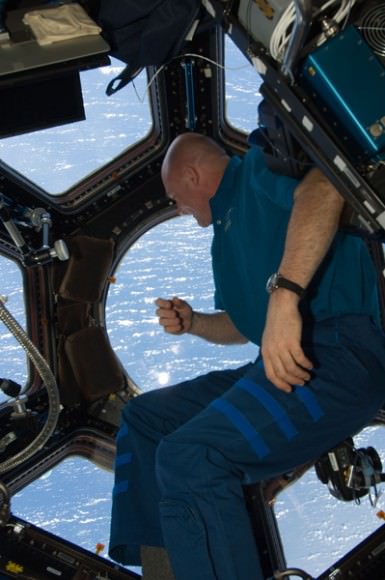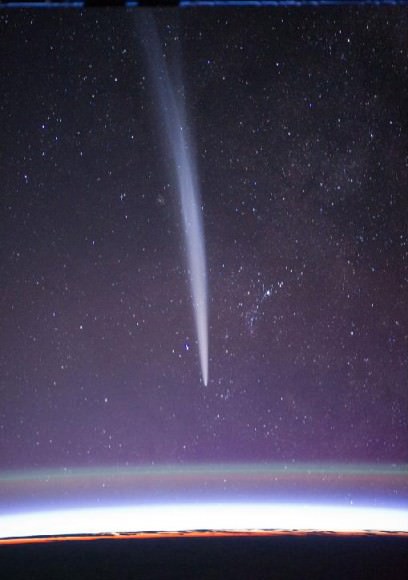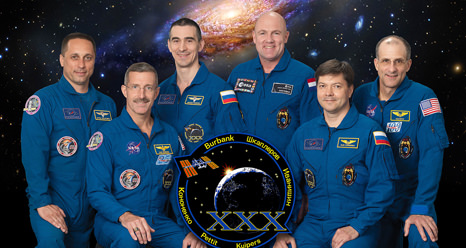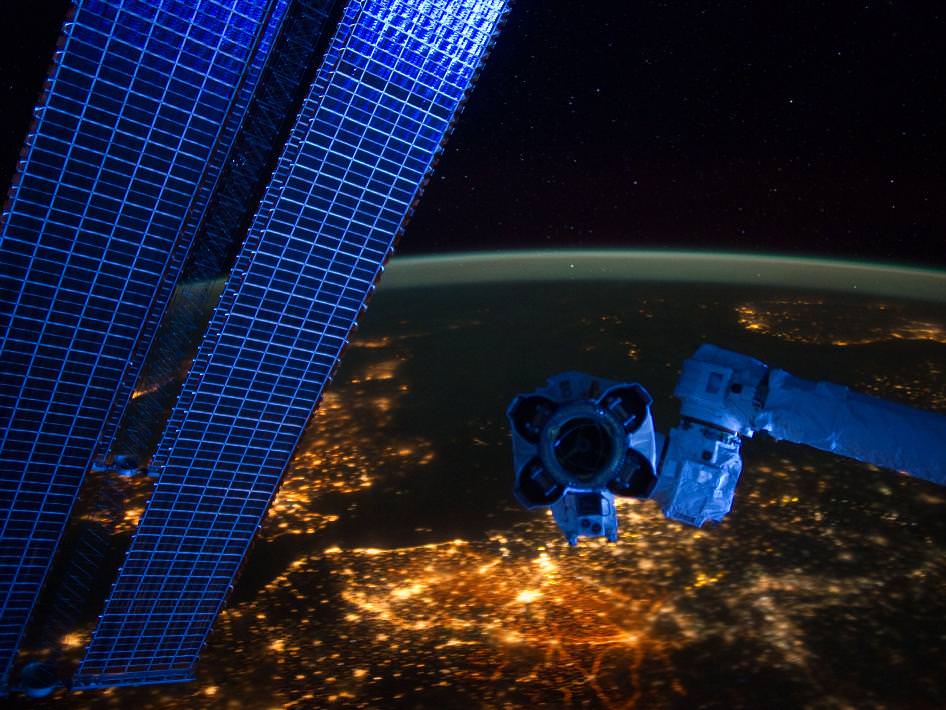[/caption]
An amazing panorama revealing Western Europe’s ‘Cities at Night’ with hardware from the stations robotic ‘hand’ and solar arrays in the foreground was captured by the crew in a beautiful new image showing millions of Earth’s inhabitants from the Earth-orbiting International Space Station (ISS).
The sweeping panoramic vista shows several Western European countries starting with the British Isles partially obscured by twin solar arrays at left, the North Sea at left center, Belgium and the Netherlands (Holland) at bottom center, and the Scandinavian land mass at right center by the hand, or end effector, of the Canadian-built ISS robotic arm known as the Space Station Remote Manipulator System (SSRMS) or Canadarm2.

Coincidentally European Space Agency astronaut Andre Kuipers from Holland (photo at left) is currently aboard the ISS, soaring some 400 kilometers (250 miles) overhead.
The panoramic image was taken by the ISS residents on January 22, 2012.
The Expedition 30 crew of six men currently serving aboard the ISS (photo below) hail from the US, Russia and Holland.
NASA astronaut Dan Burbank is the commander of Expedition 30 and recently snapped awesome photos of Comet Lovejoy.
“Cities at Night” – Here’s a portion of a relevant ISS Blog post from NASA astronaut Don Pettit on Jan. 27, 2012:
“Cities at night are different from their drab daytime counterparts. They present a most spectacular display that rivals a Broadway marquee. And cities around the world are different. Some show blue-green, while others show yellow-orange. Some have rectangular grids, while others look like a fractal-snapshot from Mandelbrot space.”
“Patterns in the countryside are different in Europe, North America, and South America. In space, you can see political boundaries that show up only at night. As if a beacon for humanity, Las Vegas is truly the brightest spot on Earth. Cities at night may very well be the most beautiful unintentional consequence of human activity,” writes NASA astronaut Don Pettit currently residing aboard the ISS.




Please don’t get me wrong but seeing all the light pollution we produce from space to me, as a sky and nature lover, is just amazing in a negative way: amazing how careless we are about the skies, the nature and our planet.
Again: please don’t get me wrong but indiscriminate light pollution is anything but “amazing” 🙁
As you type this on your computer which does not use electricity at all, right?. Really, there’s a lot of people in the world and we all need light at night so just stuff it or move to an area without electricity.
Dear Rootdown,
My post was no mean to offend someone and being this a astronomy-space web site I’d suppose more understanding on the issue of light pollution. My post was actually pointing to sensibilize to the problem of light pollution and not come out with some extremist and offensive posts like sadly you did.
There is actually quite a difference between “needed light” and indiscriminate light pollution. For example there are many glare busting lights that concentrate the light to the *floor* where the light is needed. What is the point of illuminating upwards a parking lot for example? What is the point to put on a stadium lights that illuminate the sky? Are the athletes running there? Nevertheless if you pass by a big “modern” stadium you’ll see at least 1/3 of the light produced wasted upwards (not the reflected one). And what is the point on illuminating a market parking place for example at 2 AM if it’s closed from hours?
Also instead of having a light open all the night in the garden a simple IR detector will illuminate it just when need it.
Trying to reduce the -useless- (not all!) light that is going *upwards* to the sky would both reduce the illumination costs and contribute to a healtier approach to our planet. If you or someone else is interested just go to a “Dark Sky Association” to get informed.
One thing I’m sure: you’d never been under an unpolluted sky otherwise you wouldn’t be saying something like that (except if you’re just trolling around JK 😉 ).
Bye bye!
Beautiful images indeed but one comment; the image shows the Netherlands, Holland is just a small part of the Netherlands, the area encompassing Amsterdam, Utrecht, The hague and Rotterdam. Andre Kuipers is from the Netherlands, not Holland.
🙂
Stunning photograph. Is it actually a panorama though? Looks like it could have been captured in a single shot?
I can see my home town! And yes there’s some bad astronomy were I live… ( Ostend, Belgian coast (Flanders)) anyway, thanks for posting, still, nice image!
Sehr schöne Bilder. Man sieht also, wir sparen noch nicht genug Strom!
Nord Korea ist ganz dunkel
Yes it is, Ken, yes it is. Will still be under the 3rd generation ruler-megliomanica
parabems lhoto nasa space international sation vocês sõa anjos sem asa é claro né kkkkkkkkkkk sorrindo e feliz . fim
Usually when I see these overhead photos of continents I think of the patterns of light like synapses firing through the brain. The strands of lights like thoughts between brain regions.